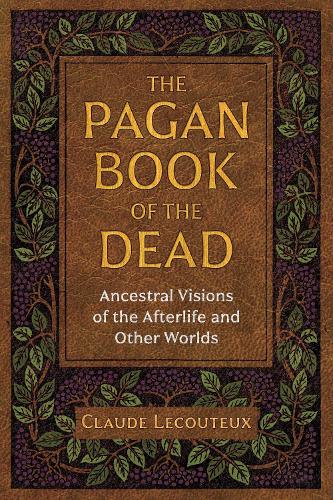
The Pagan Book of the Dead: Ancestral Visions of the Afterlife and Other Worlds
(Paperback)
Publishing Details
The Pagan Book of the Dead: Ancestral Visions of the Afterlife and Other Worlds
By (Author) Claude Lecouteux
Inner Traditions Bear and Company
Inner Traditions Bear and Company
1st November 2020
United States
Classifications
General
Non Fiction
398.2
Physical Properties
Paperback
320
Width 152mm, Height 229mm, Spine 20mm
542g
Description
An extensive look at the cartography and folklore of the afterlife worlds as seen by our ancestors
Examines how ancient European cultures viewed the beyond, including the Blessed Isles of early Greek and Celtic faith, the Hebrew Sheol, Hades from Homers Odyssey, Hel and Valhalla of the Norse, and the Aralu of Babylon
Shows how medieval accounts of journeys into the Other World represent the first recorded near-death experiences
Connects medieval afterlife beliefs and NDE narratives with shamanism, looking in particular at psychopomps, power animals, the double, the fetch, and what people bring back from their journeys to the spirit realms
Charting the evolution of afterlife beliefs in both pagan and medieval Christian times, Claude Lecouteux offers an extensive look at the cartography and folklore of the afterlife worlds as seen by our ancestors. Exploring the locations and topographies of the various forms taken by Hell, Purgatory, and Heaven, he examines how ancient European cultures viewed the beyond, including the Blessed Isles of early Greek and Celtic faith, the Hebrew Sheol, the pale world of Hades from Homers Odyssey, Hel and Valhalla of the Norse, and the Aralu of Babylon, the land where nothing can be seen. The author also explores beliefs in Other Worlds, lands different from our own that are not the afterlife but places where time flows differently and which are inhabited by fantastic or supernatural beings such as fairies or dwarfs.
Sharing medieval tales of journeys into the beyond, Lecouteux shows how these accounts represent the first recorded near-death experiences (NDEs) and examines how they compare with modern NDE narratives as well as the work of NDE researchers like Raymond Moody. In addition, he also explores tales of out-of-body experiences, dream journeys, and travels made by a double or fetch and connects these narratives with shamanism, looking in particular at psychopomps, power animals, and what people bring back from their journeys to the spirit realms.
Analyzing the afterlife beliefs of the Middle Ages as a whole, Lecouteux concludes with a collection of medieval afterlife-related traditions, such as placing polished stones in the coffin so the departed soul can find its way back to friends and family at those times of the year when the veil between the worlds grows thin.
Reviews
The Pagan Book of the Dead travels on the roads of the Other World, not to mention the travelers tales from this ineffable space, that have come down to us through folk tales and folk songs. The book ends by comparing these trips into the afterlife and into the Other World with experiences of imminent deathThe Pagan Book of the Dead is an extensive look at the cartography and folklore of the afterlife worlds as seen by ancient European Cultures. * SirReadaLot.org *
"This book sought to satisfy the deepest curiosities. Id recommend this to anyone, but especially the witch trying to cross reference the knowledge of your path, the new witch being bombarded with hearsay, and the wise wizard who literally wants to know everything. This book dives deep, and not only deals with stories of death from antiquity, but also address near death experiences from present day. If a Bible were to allow information to be added, this could be a book of death, it is aptly named, The Pagan Book of the Dead." * Alexiel Raynes, PaganPages.org *
Author Bio
Claude Lecouteux is a professor emeritus of medieval literature and civilization at the Sorbonne. He is the author of numerous books on medieval and pagan afterlife beliefs and magic, including The Book of Grimoires, Dictionary of Ancient Magic Words and Spells, and The Tradition of Household Spirits. He lives in Paris.
